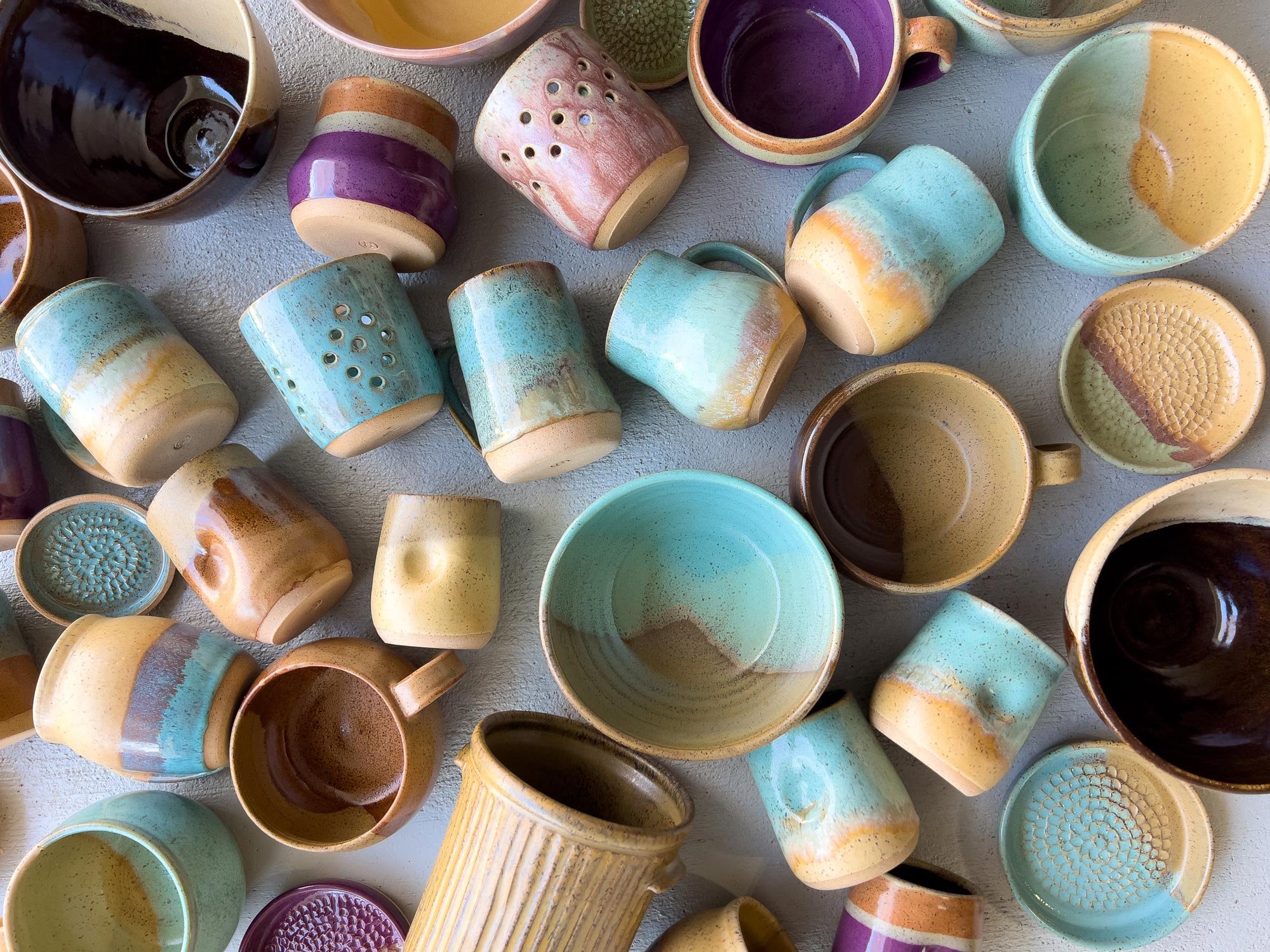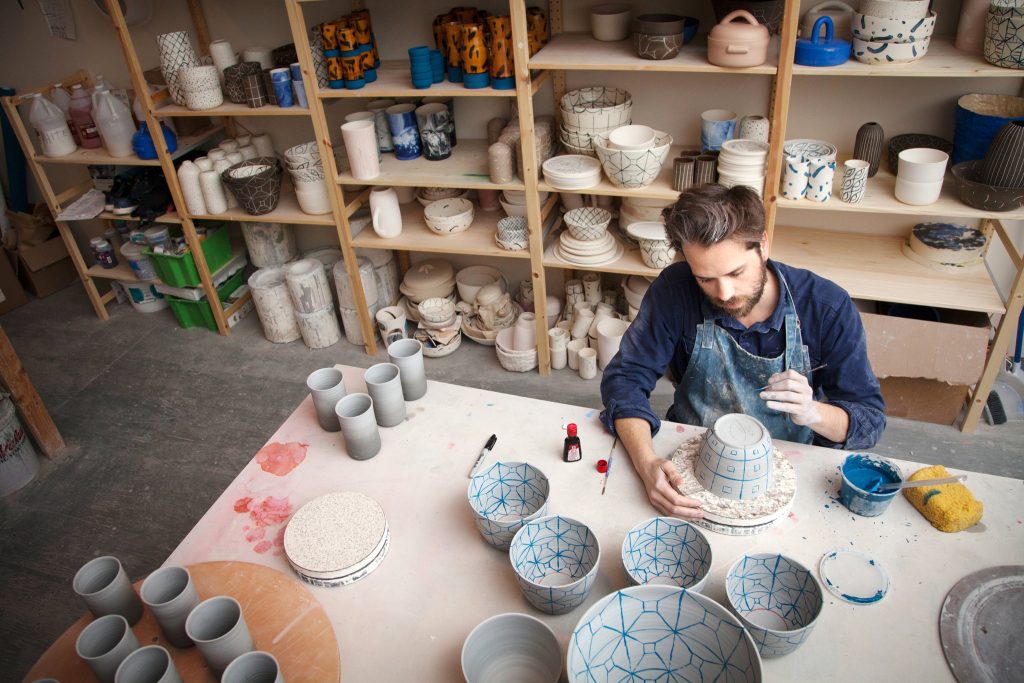Introduction
In a world inundated with mass-produced goods, the allure of handcrafted ceramics stands out like a beacon of authenticity and artistry. From delicate porcelain to rustic stoneware, handcrafted ceramics encapsulate the skill, passion, and creativity of artisans around the globe. This article delves into the enchanting world of handcrafted ceramics, exploring the processes, aesthetics, and timeless appeal of these artisanal treasures.
The Art of Handcrafting Ceramics

Crafting ceramics by hand is a labor of love, requiring patience, precision, and a deep understanding of the medium. Handcrafted ceramics begin as raw clay, transformed through a series of meticulous steps into functional art pieces. Artisans employ various techniques such as wheel-throwing, hand-building, and slip-casting to shape the clay into bowls, vases, plates, and other objects of beauty.
Unveiling the Process
The journey of transforming clay into ceramics is a fascinating blend of tradition and innovation. Handcrafted ceramics typically involve the following stages:
1. Preparation of Clay: Artisans begin by wedging and kneading the clay to remove air bubbles and ensure uniform consistency.
2. Shaping: Whether on a potter’s wheel or through hand-building techniques, the clay is shaped into the desired form, with careful attention to detail and proportion.
3. Drying: Once shaped, the ceramics undergo a drying process to remove excess moisture, preparing them for firing.
4. Firing: The dried pieces are fired in a kiln at high temperatures, a crucial step that transforms the clay into durable ceramic material.
5. Glazing: After the initial firing, artisans may apply glazes to enhance the aesthetics and functionality of the ceramics, adding color, texture, and protective finishes.
6. Final Firing: The glazed pieces undergo a final firing to fuse the glaze to the ceramic surface, resulting in lustrous finishes and vibrant colors.
Celebrating Artisanal Mastery
Handcrafted ceramics embody the essence of artisanal mastery, showcasing the individuality and creativity of the maker. Unlike mass-produced ceramics, each handcrafted piece bears the marks of its creator, from subtle imperfections to unique flourishes. The tactile nature of handcrafted ceramics invites exploration, inviting us to appreciate the beauty of craftsmanship in our everyday lives.
Exploring Aesthetic Diversity
One of the most captivating aspects of handcrafted ceramics is the sheer diversity of styles, techniques, and aesthetics represented in this art form. From minimalist Scandinavian designs to intricate Japanese pottery, each culture brings its own rich heritage and artistic sensibility to ceramic making.
Regional Influences
Across the globe, artisans draw inspiration from their cultural heritage, natural surroundings, and artistic traditions to create distinctive ceramic styles:
1. Japanese Ceramics: Renowned for their simplicity and elegance, Japanese ceramics such as “raku” and “kintsugi” embody the principles of wabi-sabi, celebrating imperfection and transience.
2. Mediterranean Pottery: From the vibrant hues of Spanish majolica to the earthy tones of Italian terracotta, Mediterranean pottery reflects the region’s rich history and vibrant…
Modern Interpretations
In addition to traditional techniques, contemporary ceramic artists are pushing the boundaries of the medium, experimenting with innovative forms, textures, and finishes. From avant-garde sculptures to functional art objects, modern handcrafted ceramics blur the line between…
Embracing Sustainability
In an era marked by environmental awareness and ethical consumption, the appeal of handcrafted ceramics extends beyond aesthetics to sustainability. Unlike mass-produced ceramics, which often contribute to waste and pollution, handcrafted ceramics prioritize…
Eco-Friendly Practices
Many artisans employ eco-friendly practices such as using locally sourced materials, minimizing waste, and adopting low-impact production methods. By supporting handcrafted ceramics, consumers can embrace sustainable living…
Longevity and Durability
In a throwaway culture dominated by disposable goods, handcrafted ceramics offer a sustainable alternative. Built to last a lifetime and beyond, these heirloom-quality pieces not only reduce…
Handcrafted Ceramics: Elevating Everyday Rituals
Beyond their aesthetic appeal and sustainability, handcrafted ceramics enrich our daily rituals, transforming mundane tasks into meaningful experiences. Whether sipping morning coffee from a handmade mug or savoring a homemade meal on artisanal…
Functional Beauty

The marriage of form and function is at the heart of handcrafted ceramics, where utilitarian objects are elevated to works of art. Each piece is thoughtfully designed to enhance the sensory…
Personal Connection
Unlike mass-produced goods devoid of character, handcrafted ceramics forge a personal connection between maker and user. Knowing the story behind a ceramic piece, the hands that shaped it, and the…
FAQs (Frequently Asked Questions)
Q: What makes handcrafted ceramics unique? A: Handcrafted ceramics embody the artisan’s skill and creativity, bearing the marks of individuality and craftsmanship absent in mass-produced goods.
Q: Are handcrafted ceramics dishwasher safe? A: While many handcrafted ceramics are dishwasher safe, it’s advisable to check the manufacturer’s recommendations to ensure the longevity of the piece.
Q: How can I support ceramic artisans? A: Supporting ceramic artisans is as simple as purchasing their creations, attending local craft fairs, and spreading the word about their work through social media and word-of-mouth.
Q: Can I commission custom ceramics? A: Absolutely! Many ceramic artists accept custom orders, allowing you to collaborate with them to create bespoke pieces tailored to your preferences.
Q: What are some popular glazing techniques in handcrafted ceramics? A: Popular glazing techniques include dip glazing, brushwork, and sgraffito, each imparting unique textures, colors, and finishes to ceramic surfaces.
Q: How do I care for handcrafted ceramics? A: Handcrafted ceramics require gentle care to maintain their beauty and integrity. Avoid sudden temperature changes, handle with care, and clean with mild detergent and a soft sponge.
Conclusion
In a world captivated by mass production and fleeting trends, handcrafted ceramics stand as timeless testaments to craftsmanship, creativity, and authenticity. From the hands of artisans to the hearts of discerning consumers, these artisanal treasures enrich our lives with beauty, functionality, and meaning. So, let us celebrate the artistry of handcrafted ceramics and embrace the joy of owning pieces that tell stories of tradition, skill, and passion. Whether adorning our homes or enriching our daily rituals, handcrafted ceramics serve as reminders of the beauty found in craftsmanship and the value of supporting artisans.
As you explore the world of handcrafted ceramics, immerse yourself in the diversity of styles, techniques, and cultural influences that shape this timeless art form. From delicate porcelain teacups to rustic earthenware bowls, each piece carries with it a legacy of craftsmanship passed down through generations.
So, the next time you sip tea from a handmade mug or serve a meal on a beautifully crafted platter, take a moment to appreciate the artistry and dedication that went into creating these exquisite pieces. By choosing handcrafted ceramics, you not only adorn your life with beauty but also support a thriving community of artisans keeping age-old traditions alive.
In a world that often prioritizes speed and efficiency, handcrafted ceramics remind us to slow down, savor the moment, and cherish the beauty of handmade treasures. Let them serve as gentle reminders of the value of craftsmanship, the importance of sustainability, and the joy of surrounding ourselves with objects that bring warmth and meaning to our lives.
So, whether you’re a seasoned collector or a newcomer to the world of ceramics, let the allure of handcrafted treasures inspire you to seek out the beauty in the everyday and celebrate the artisans who bring it to life.

